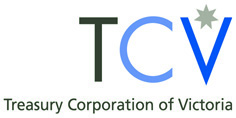
Liquidity and turnover top the order of business for TCV
The state of Victoria has bounced back from the pandemic with the worst of the impact on the funding task now behind it. Paul Kelly, Treasury Corporation of Victoria’s Melbourne-based head of markets, describes the treasury corporation’s approach from here, including how it is highlighting its enlarged issuance task – including sustainability bonds – to investors.
What were the key takeaways from the 2023/24 Victorian state budget, released in May, and how has the economy been recovering from the impact of the pandemic?
The Victorian economy is growing and is underpinned by a strong labour force. After a very strong 5.6 per cent rebound in economic growth in 2021/22, the government expects growth to moderate to 2.75 per cent in 2022/23 – which is broadly in line with the national average. Victorian labour market conditions are now stronger than they were prepandemic, with unemployment at a record low and the number of people participating in the workforce near a record high.
The government remains committed to delivering on the four-step fiscal strategy announced in the 2020/21 budget. The budget also aims to deliver on the government’s election commitments as well as other priorities, particularly in health, education and transport. This is highlighted by an average infrastructure investment of around A$19.6 billion (US$12.1 billion) over the forward estimates.
What progress has been made in the four-step fiscal strategy for economic recovery?
The four-step strategy provided a framework to support Victorians through the pandemic and restore the state’s finances in the medium term. The first step – creating jobs, reducing unemployment and restoring economic growth – is being met. The second step – returning to an operating cash surplus – is expected to be achieved in 2022/23 with a forecast surplus of A$2.9 billion, increasing to A$6.5 billion over the budget outlook.
The third step – returning to an operating surplus – is forecast by 2025/26. And the fourth step – stabilising net debt, which relies on the previous three steps being met – is very close to being achieved. While net debt and net debt to GSP are still projected to rise over the forward estimates, the rate of growth slows from 2022/23 onwards and is forecast to be 0.1 per cent from flat by the end of the period.
How has the 2023/24 budget affected Treasury Corporation of Victoria (TCV)’s funding task and what will you be discussing with investors this year?
This year’s funding task of A$33.7 billion is slightly higher than the A$32.1 billion forecast for 2023/24 in last year’s budget but is in line with the average raised over the past three years. The downward trajectory of the new-money requirement over the four-year forward estimates, to A$14.9 billion from A$25.4 billion, demonstrates that the worst of the pandemic impact on funding is over.
Our key messages to investors are that the Victorian economy is strong, the credit remains strong, spreads are attractive and the market continues to provide favourable issuance conditions.
There is now more than A$430 billion of semi-government bonds on issue, which is more than half the size of the nominal ACGB [Australian Commonwealth government bond] market. Supply from the semis this year will likely exceed that of the AOFM [Australian Office of Financial Management] and liquidity conditions remain robust.
We estimate turnover in TCV bonds this year will exceed A$200 billion and the cost to enter or exit a position has never been tighter. All in all, we believe the semi-government market has evolved into a genuine investment alternative to ACGBs for investors, and is now too big to ignore by offshore investors with Australian dollar demand.
Sustainability is an ever-growing focus for governments around the world. How is Victoria integrating sustainability with its economic objectives?
Victoria is leading the nation on climate action and its emissions reduction targets are among the most ambitious of any jurisdiction globally. Victoria’s first climate change strategy, released in May 2021, is a five-point plan providing a roadmap to net zero emissions by 2050.
In May 2023, the government released a new set of ambitious climate action targets and provided an update on its progress toward net zero. It brought forward its net zero emissions target by five years to 2045 and has set a target of a 75-80 per cent reduction to its emissions by 2035. Both targets are reductions below 2005 emissions levels.
Late last year, the Victorian government released its climate-related risk disclosure statement 2022 and in doing so became the first TCFD [Task Force on Climate-Related Financial Disclosures]-aligned entity in the Australian government sector.

HIGH-GRADE ISSUERS YEARBOOK 2023
The ultimate guide to Australian and New Zealand government-sector borrowers.










